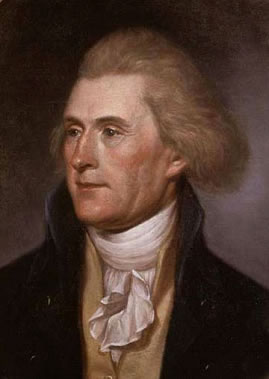The second president of the United States, John Adams (1735-1826) played a major role in the colonial movement toward independence. He wrote the Massachusetts Constitution of 1780 and served as a diplomatic representative of Congress in the 1780s. John Adams was born in Braintree (now Quincy), Mass. His father was a modest but successful farmer and local officeholder. After some initial reluctance, Adams entered Harvard and received his bachelor's degree in 1755. For about a year he taught school in Worcester. Though he gave some thought to entering the ministry, Adams was repelled by the theological acrimony resulting from the period of the Great Awakening and turned to the law. After studying under James Putnam, Adams was admitted to the Boston bar in 1758. While developing his legal practice, he participated in town affairs and contributed his first essays to the Boston newspapers. In 1764 he married Abigail Smith of Weymouth, who brought him wide social connections and was to share with sensitivity and enthusiasm in the full life that lay ahead. Early Political Career By 1765 Adams had achieved considerable distinction at the Boston bar. With the Stamp Act crisis he moved into the center of Massachusetts political life. He contributed an important series of essays, Dissertation on the Canon and Feudal Law, to the Boston Gazette and prepared a series of anti-Stamp Act resolutions for the Braintree town meeting, which were widely copied throughout the province. In April 1768 Adams moved to Boston. He defended John Hancock against smuggling charges brought by British customs officials and acted as counsel for Capt. Thomas Preston, the officer in charge of British troops at the Boston Massacre. Adams undertook the Preston defense somewhat reluctantly, fearing its consequences for his own local popularity, but the need to provide Preston with a fair trial persuaded him to act - with no damage, in the end, to his own reputation or practice. Indeed, a few weeks later Adams was elected representative from Boston to the Massachusetts Legislature. In the spring of 1771, largely for reasons of health, Adams returned to Braintree, where he divided his attention between farming and the law. Within a year, however, professional and political considerations drew him back to Boston. In 1773 he celebrated the Boston Tea Party as a dramatic challenge to British notions of parliamentary supremacy. The next year he was one of the representatives from Massachusetts to the First Continental Congress, where he took a leading role in developing the colonists' constitutional defense against the Coercive Acts and other British measures. Although Adams favored the various petitions Congress made to the King, Parliament, and the English people, as well as the scheme of nonimportation agreements, he nonetheless hoped for more vigorous measures. All the while, however, he had to guard against the suspicion held by many other delegates that the New Englanders were plotting independence. Upon his return to Massachusetts, Adams was chosen for the governor's council but was negatived. During the winter of 1774-1775 he carried on, under the pseudonym Novanglus, an extended debate with Daniel Leonard over the proper constitutional relations between the Colonies and Parliament. Adams's recommended solution at this point was a commonwealth system of empire, with a series of coequal parliaments joined by common allegiance to the Crown. After the battles of Lexington and Concord, Adams returned to Congress, carrying the welcome instructions from the General Court for measures to establish American liberties on a permanent basis, secure from attack by Britain. He now believed that independence would probably be necessary. Congress, however, was not yet willing to agree, and Adams fumed while still more petitions were sent off to England. The best chance of promoting independence, he concluded, was through the device of instructing the various colonies to adopt new forms of government following the breakdown of their provincial regimes. Replying to petitions from several provinces seeking advice on their governments (petitions which Adams and others had solicited), he recommended that they adopt new governments modeled on their colonial regimes and framed by special conventions. By February 1776 Adams was back in Congress. There he presented, first privately in response to the requests of several delegates and then publicly in a pamphlet entitled "Thoughts on Government," his specific proposals for the reconstruction of the provincial governments. Adams was at last fully committed to American independence. In May, Congress finally passed a resolution that, where no adequate governments existed, measures should be taken to provide for the "happiness and safety" of the people. For this resolution Adams wrote a preamble which in effect asserted the principle of independence. A month later he seconded Richard Henry Lee's resolution for the formal declaration of independence, the contracting of foreign treaties, and the construction of a continental confederation. A member of the committee appointed to bring in the formal statement, Adams contributed little to the content of the Declaration of Independence but served, as Thomas Jefferson later reported, as "the pillar of its support on the floor of the Congress." On another committee Adams drew up a model treaty that encouraged Congress to enter into commercial but not political alliances with European nations. Exhausted by his duties, he temporarily left Philadelphia in mid-October for Massachusetts. For the next year or so he continued to serve in Congress. Diplomatic Career On Nov. 28, 1777, Congress elected Adams commissioner to France, replacing Silas Deane, and in February Adams embarked from Boston for what was to prove an extended stay. Upon arrival, Adams found that France had already granted diplomatic recognition to the United States and contracted treaties of commerce and amity. With nothing specific to do, Adams spent the next year and a half trying to keep busy: attempting to secure badly needed loans for Congress, transmitting lengthy letters on European affairs, and learning with mixed fascination and repugnance about the ways of French court and national life. When he learned that Benjamin Franklin, one of his fellow commissioners, had been appointed sole American plenipotentiary in France, Adams returned to Boston, where in the fall of 1779 he was elected from Braintree to the state constitutional convention. For the next few months he devoted his time to the convention, preparing what became the basic draft of the new Massachusetts constitution. In the meantime Adams had been tapped by Congress for another diplomatic post, this time as commissioner to contract peace and then a commercial treaty with Great Britain. He embarked in mid-November and arrived in Paris on Feb. 9, 1780. Again he found his situation frustrating, largely because he had been instructed to make no significant moves without the prior approval of the Comte de Vergennes, the French foreign minister. Between Adams and Vergennes there quickly developed a mutual dislike - duplicated in Adams's relations with Franklin, a man more flexible and less demanding in his relations with the French foreign minister. In the face of all this, Adams spent considerable time writing his friends in Congress to complain of his difficult position. Having been further commissioned minister plenipotentiary to the United Provinces, Adams finally secured recognition by The Hague in the spring of 1782, and in October he signed the first of several desperately needed loans with a group of Dutch bankers. He returned to Paris to negotiate the terms of peace with the British representatives. Adams and the other two American commissioners, Franklin and John Jay, ignored their instructions to make no agreement without first consulting Vergennes; they feared (correctly) that France wished to pressure the United States into peace arrangements inconsistent with national interest (for example, leaving certain coastal areas in British hands). The American commissioners concluded provisional articles of peace and sent the results home to Congress. These were duly signed as the definitive treaty of peace on Sept. 3, 1783. The Dutch loans and the treaty of peace were the major products of the diplomatic phase of Adams's public career. Before returning permanently to the United States, however, he spent 3 frustrating years as American envoy to the Court of St. James in London, attempting without success to negotiate a commercial treaty and to clear up various diplomatic issues carried over from the Revolution. Rebuffed by British officials and unsupported by a weak Congress, Adams finally asked to resign. Formal letters of recall were sent in February 1788. During the last year and a half of his stay, he composed his three-volume Defense of the Constitutions of Government of the United States of America, an extended attempt to defend the American concept of balanced government against the criticisms of the French statesman A.R.J. Turgot. The Presidency With his return to Boston, Adams began the final stage of his public career. He was chosen vice president in 1789 under the new Federal constitution, a position he was to fill, again with considerable frustration because of its powerlessness, during both of Washington's administrations. As the election of 1796 approached, the Jeffersonian Republicans began forming an opposition to the Federalists' financial program and seemingly pro-British foreign policy. The Republicans presented Jefferson as their presidential candidate. The Federalists split into two factions, with Adams as one candidate and Thomas Pinckney (backed by Alexander Hamilton) as the other. In spite of Hamilton's efforts, Adams ran well ahead of Pinckney and became the second president of the United States. Jefferson, a scant three electoral votes behind, became vice president. Adams took office on March 4, 1797. From the first his presidency was a stormy one. His Cabinet, inherited from Washington and dominated by Hamilton's followers, proved increasingly difficult to control. Foreign policy problems, generated by the outbreak of war between revolutionary France and a counterrevolutionary coalition of European nations, created internal political crises of magnitude. The outbreak of revolution in France had tended to polarize political discussion in the United States as well as in Europe between "aristocratic" and "democratic" positions. More particularly, the war between England and France raised questions of whether the United States would maintain a strict neutrality - in fact impossible because of efforts by both England and France to control American trade - or align itself, at least sympathetically, with one of the countries. While most Americans professed the desire to remain neutral in the contest, the Jeffersonians were sympathetic with France and the Federalists with England. Adams found himself caught in the middle. In 1797 French diplomats attempted to bribe the three-man commission sent by the United States to negotiate various points in dispute between the two nations. The immediate result was an outburst of anti-French sentiment, which the Hamiltonians worked hard to inflame. Adams became caught up in the furor as well, making numerous statements during the spring and summer of 1798 that fanned emotions even higher. Taking advantage of the situation, the Federalists in Congress, with Adams's tacit approval, developed a war program consisting of substantial increases in the American navy, a large provisional army, the Alien and Sedition Acts (aimed at controlling potential subversives within), and a system of tax measures to finance the entire program. The Federalist goals were two: to prepare for an expected war with France and to attack the Jeffersonian opposition. For a while it seemed that the Federalist measures would carry the day. But during the late summer and fall of 1798 the prospect of peaceful accommodation with France increased, and public discontent with the Federalist war program (helped along by the cries of the Jeffersonians) broke through the surface. President Adams, at home in Massachusetts during much of this time, became convinced that war with France was not necessary and that the Federalist policies, if continued, were likely to result in serious internal disorder. Early in 1799 he committed himself to a plan of peaceful accommodation with France - a decision that enraged most of the Hamiltonians and left them sitting far out on a political limb, with a military establishment and no foreign invader to fight. By 1800 the split between Adams and the Hamiltonian wing of the Federalist party was complete. Adams dismissed the main Hamiltonians from his Cabinet, and Hamilton openly opposed Adams for reelection. But the President's peace initiatives were both enlightened statesmanship and good politics. The young nation was unprepared for any major external war, and the possibility of serious internal conflict if the war program was continued seems to have been real. Moreover, as various individuals reported, by late 1799 France was prepared for an honorable accommodation with the United States, so there was no longer reason for conflict. Politically, Adams's peace decision made comparable sense. The Federalist split no doubt weakened his chances in 1800, but the Jeffersonians were already scoring heavily in their attacks on Federalist policies. Continued defense of such policies would almost certainly have led to political disaster. In the end Adams lost the election to Jefferson by a narrow margin. Adams later described his peace decision as "the most splendid diamond in my crown," more important than his leadership in the revolutionary crisis, his constitutional writings, or his diplomatic service. He left the capital, however, bitterly disappointed over his rejection by the American people, so distressed that he even refused to remain for Jefferson's inaugural in 1801. Adams spent the remainder of his life in political seclusion, though he retained a lively interest in public affairs, particularly when they involved the rising career of his son, John Quincy Adams. John Adams divided his time between overseeing his farm and carrying on an extended correspondence concerning both his personal experiences and issues of more general political and philosophical significance. He died at the age of 91, just a few hours after Jefferson's death, on July 4, 1826.
|
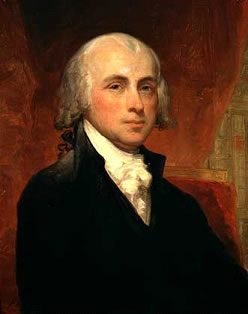 |
John Adams Born: October 30, 1735
|
|
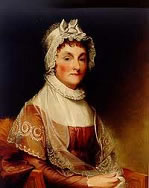 |
|
First lady: Abigail Smith Adams |
|
|
|
Vice-president: Thomas Jefferson |
|
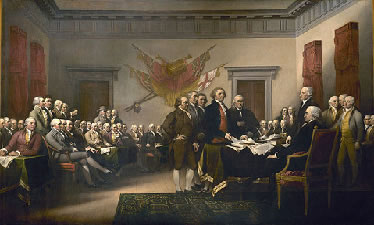 |
|
| Trumbull's Declaration of Independence depicts committee presenting draft Declaration of Independence to Congress. Adams at center has hand on hip. | |
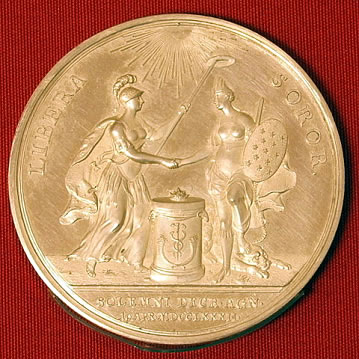 |
|
| Coin minted in Amsterdam for John Adams in 1782 by Johann Georg Holtzhey to celebrate recognition of the United States as an independent nation by The Netherlands, from the coin collection of the Teylers Museum | |
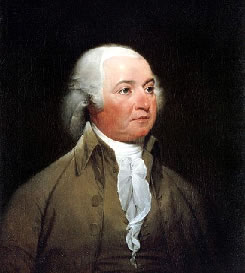 |
|
| Portrait of Adams by John Trumbull, 1792–93 | |
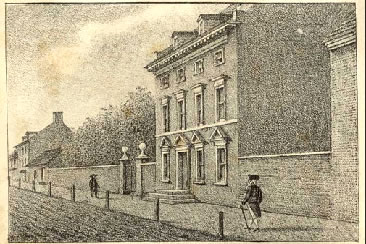 |
|
| President's House, Philadelphia. The presidential mansion of George Washington before him, Adams occupied this Philadelphia mansion from March 1797 to May 1800. | |
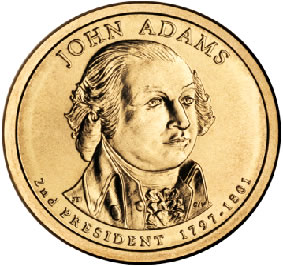 |
|
| Presidential Dollar of John Adams, released in 2007 | |
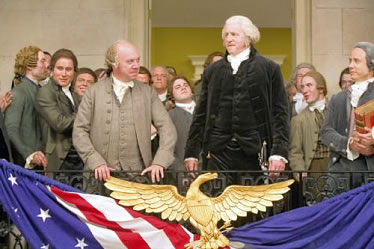 |
|
John Adams
|
|
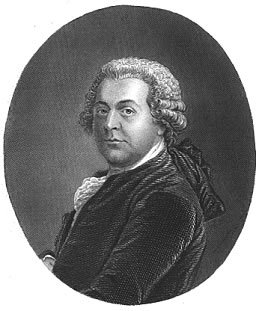 |
|
| John Adams |
